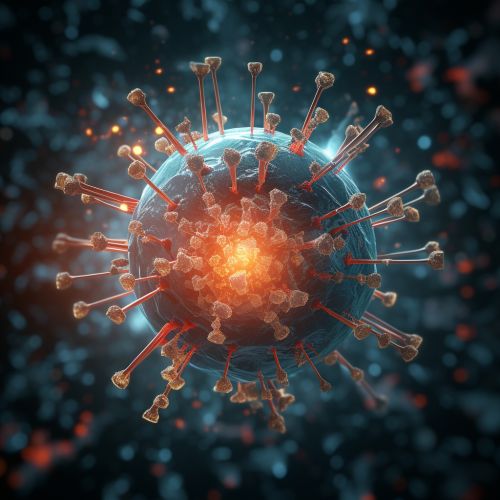HIV
Overview
Human Immunodeficiency Virus (HIV) is a retrovirus that primarily infects components of the human immune system such as CD4+ T cells, macrophages and dendritic cells. It directly and indirectly destroys CD4+ T cells, leading to a weakened immune system and the potential for life-threatening infections and diseases.


Classification and Structure
HIV is a member of the genus Lentivirus, part of the family of Retroviridae. Lentiviruses have many morphologies and biological properties in common. Many species are infected by lentiviruses, which are characteristically responsible for long-duration illnesses with a long incubation period.
Transmission
HIV is transmitted from person to person via bodily fluids. This can occur through direct blood contact, including the use of contaminated needles, sexual intercourse, from mother to child during childbirth or breastfeeding, and occasionally through infected blood transfusions.
Pathophysiology
Once HIV has entered the body, it targets the CD4+ T cells, which are crucial for the body's immune response against infections. The virus integrates its genetic material into the host cell's DNA, allowing it to use the host's machinery to replicate and produce new virus particles.
Clinical Manifestations and Complications
The clinical manifestations of HIV infection can be divided into acute and chronic stages. The acute stage is characterized by flu-like symptoms, while the chronic stage can be asymptomatic for many years. If left untreated, HIV can progress to Acquired Immunodeficiency Syndrome (AIDS), a condition characterized by the development of severe opportunistic infections, cancers, and neurological disorders.
Diagnosis
Diagnosis of HIV infection is primarily done through blood tests that detect the presence of HIV antibodies or the virus itself. Other tests such as the Polymerase Chain Reaction (PCR) test can be used to measure the amount of virus in the blood, which is useful for monitoring disease progression and response to treatment.
Treatment and Prevention
While there is currently no cure for HIV, it can be managed with antiretroviral therapy (ART), which can significantly slow disease progression and reduce the risk of transmission. Prevention strategies include safe sex practices, needle exchange programs, and pre-exposure prophylaxis (PrEP).
Epidemiology
HIV/AIDS is a global pandemic, affecting millions of people worldwide. Sub-Saharan Africa is the most affected region, with approximately two-thirds of all people living with HIV residing there.
